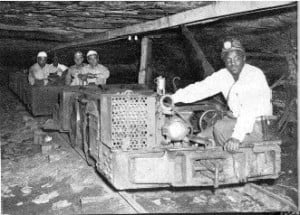 In March 2014, global health officials recognized an outbreak of Ebola virus disease (EVD) in Guinea, West Africa. In retrospect, officials determined that the outbreak began in December 2013, and spread to the adjacent countries of Liberia and Sierra Leone. In September 2014, the U.S. Centers for Disease Control and Prevention (CDC) confirmed the first EVD case diagnosed in the United States, heightening concerns among some who fear the disease could spread in American communities. This report discusses EVD in general, including symptoms, modes of transmission, incubation period, and treatments; presents projections of the future course of the outbreak; and lists additional CRS products, including products focused on the situation in West Africa. Unless otherwise cited, information in this report is drawn from Ebola information pages of CDC and the World Health Organization (WHO).
In March 2014, global health officials recognized an outbreak of Ebola virus disease (EVD) in Guinea, West Africa. In retrospect, officials determined that the outbreak began in December 2013, and spread to the adjacent countries of Liberia and Sierra Leone. In September 2014, the U.S. Centers for Disease Control and Prevention (CDC) confirmed the first EVD case diagnosed in the United States, heightening concerns among some who fear the disease could spread in American communities. This report discusses EVD in general, including symptoms, modes of transmission, incubation period, and treatments; presents projections of the future course of the outbreak; and lists additional CRS products, including products focused on the situation in West Africa. Unless otherwise cited, information in this report is drawn from Ebola information pages of CDC and the World Health Organization (WHO).
Author: Lister, S. A.
For more information please contact:
NTIS 1-800-553-6847 M – F 8am – 5pm est
Month: November 2014
Design Issues for Using Magnetic Materials in Radiation Environments at Elevated Temperature.
![images[7]](https://ntis.scienceblog.com/files/2014/09/images7.jpg) One of the challenges of designing motors and alternators for use in nuclear powered space missions is accounting for the effects of radiation. Terrestrial reactor power plants use distance and shielding to minimize radiation damage but space missions must economize volume and mass. Past studies have shown that sufficiently high radiation levels can affect the magnetic response of hard and soft magnetic materials. Theoretical models explaining the radiation-induced degradation have been proposed but not verified. This paper reviews the literature and explains the cumulative effects of temperature, magnetic-load, and radiation-level on the magnetic properties of component materials. Magnetic property degradation is very specific to alloy choice and processing history, since magnetic properties are very much entwined with specific chemistry and microstructural features. However, there is basic theoretical as well as supportive experimental evidence that the negative impact to magnetic properties will be minimal if the bulk temperature of the material is less than fifty percent of the Curie temperature, the radiation flux is low, and the demagnetization field is small.
One of the challenges of designing motors and alternators for use in nuclear powered space missions is accounting for the effects of radiation. Terrestrial reactor power plants use distance and shielding to minimize radiation damage but space missions must economize volume and mass. Past studies have shown that sufficiently high radiation levels can affect the magnetic response of hard and soft magnetic materials. Theoretical models explaining the radiation-induced degradation have been proposed but not verified. This paper reviews the literature and explains the cumulative effects of temperature, magnetic-load, and radiation-level on the magnetic properties of component materials. Magnetic property degradation is very specific to alloy choice and processing history, since magnetic properties are very much entwined with specific chemistry and microstructural features. However, there is basic theoretical as well as supportive experimental evidence that the negative impact to magnetic properties will be minimal if the bulk temperature of the material is less than fifty percent of the Curie temperature, the radiation flux is low, and the demagnetization field is small.
Personal Author: C. L. Bow
For more information contact: NTIS
800-553-6847 M – F 8am – 5pm est
Sediment-Hosted Gold Deposits of the World-Database and Grade and Tonnage Models.
 All sediment-hosted gold deposits (as a single population) share one characteristicthey all have disseminated micron-sized invisible gold in sedimentary rocks. Sediment-hosted gold deposits are recognized in the Great Basin province of the western United States and in China along with a few recognized deposits in Indonesia, Iran, and Malaysia. Three new grade and tonnage models for sediment-hosted gold deposits are presented in this paper: (1) a general sediment-hosted gold type model, (2) a Carlin subtype model, and (3) a Chinese subtype model. These models are based on grade and tonnage data from a database compilation of 118 sediment-hosted gold deposits including a total of 123 global deposits.
All sediment-hosted gold deposits (as a single population) share one characteristicthey all have disseminated micron-sized invisible gold in sedimentary rocks. Sediment-hosted gold deposits are recognized in the Great Basin province of the western United States and in China along with a few recognized deposits in Indonesia, Iran, and Malaysia. Three new grade and tonnage models for sediment-hosted gold deposits are presented in this paper: (1) a general sediment-hosted gold type model, (2) a Carlin subtype model, and (3) a Chinese subtype model. These models are based on grade and tonnage data from a database compilation of 118 sediment-hosted gold deposits including a total of 123 global deposits.
Personal Author Berger, V. I.; Mosier, D. L.; Bliss, J. D.; Moring, B. C.
For more info please contact NTIS 1-800-553-6847 Mon – Fri 8am – 5pm est